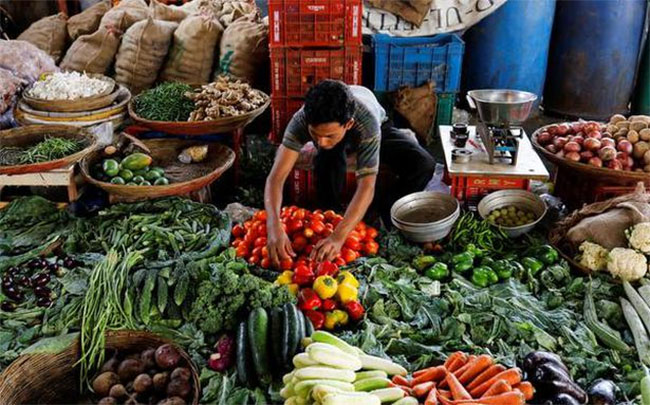Sri Lanka among top 5 countries with highest food price inflation
August 23, 2022 09:02 am
Sri Lanka ranks fifth, only behind Lebanon, Zimbabwe, Venezuela and Türkiye, with the highest food price inflation in the world, according to the latest World Bank assessment.
The World Bank’s latest Food Security Update states that domestic food price inflation remains high around the world, with high inflation continuing in almost all low and middle-income countries and the share of high-income countries with high inflation increasing sharply.
Domestic food price inflation (measured as year-on-year change in the food component of a country’s Consumer Price Index (CPI)) remains high around the world, it said.
Information from the latest month between April and July 2022 for which food price inflation data are available shows high inflation in almost all low and middle-income countries; 92.9 percent of low-income countries, 92.7 percent of lower-middle-income countries, and 89 percent of upper-middle-income countries have seen inflation levels above 5 percent, with many experiencing double-digit inflation.
The share of high-income countries with high inflation has also increased sharply, with about 83.3 percent experiencing high food price inflation. The most affected countries are in Africa, North America, Latin America, South Asia, Europe, and Central Asia.
In real terms, food price inflation exceeded overall inflation (measured as year-on-year change in the overall CPI) in 81 percent of the 153 countries for which food CPI and overall CPI indexes are both available.
This week’s 10 countries with the highest food price inflation, in nominal and real terms, are listed below (using the latest month for which data are available between April and July 2022).
Sri Lanka ranks fifth in the Top 10 list with Nominal food inflation at 91% (YoY), behind only Lebanon (332%), Zimbabwe (309%), Venezuela (155%) and Türkiye (95%).
Sri Lanka is ahead of countries such as Iran (90%), Argentina (66%), Suriname (38%), Ethiopia (38%) and Moldova (34%).
Meanwhile among the Top 10 counties with the highest Real Food Inflation (YoY), Sri Lanka ranks fourth with 30% behind only Lebanon (122%), Zimbabwe (52%) and Iran (36%).
According to the World Bank’s latest update, food price inflation remains at a multiyear high in South Asian countries.
As of July 2022, Bangladesh and Nepal had not experienced major food shortages, Pakistan has experienced some decreases in wheat and rice production (because of lack of fertilizer and a heat wave), and Bhutan and Sri Lanka are experiencing significant shortages in domestic food supply.
“In Sri Lanka, agricultural production has decreased by 40 percent to 50 percent because of fertilizer shortages, and there is a lack of foreign exchange to purchase food imports. Fertilizer and fuel (for land preparation, transport, and harvesting activities) shortages are expected to limit the food supply.”
“Some relief is coming from the first shipment of 44,000 tonnes of urea supported by Indian credit (and 21,000 tonnes is expected to arrive soon). There has been an increase in demand for Indian rice, with roughly 9.6 million tonnes shipped this year.”
“Exporters, concerned that export restrictions will be introduced (as has been done for wheat), are moving quickly to open letters of credit and have signed contracts to export 1 million tonnes of rice from June through September 2022.”
Food price inflation reached 80 percent in Sri Lanka, 26 percent in Pakistan, and 8.3 percent in Bangladesh.
Across the region, governments have adjusted agricultural policies to address food security concerns, the report said. The government of Bangladesh reduced rice import tariffs, increased the budgetary allocation to agriculture, increased fertilizer subsidies, and provided a cash incentive to exporters.
In Bhutan, the government is stocking essential food items directly and through concessional working capitals to wholesalers and retailers.
The government of Pakistan has been providing targeted subsidies and has increased coverage of social protection programs to protect the poorest households from high food prices.














